CES 2018
Lights, Camera, Action: 3D Visualization and UX design for Live Motion Capture.

CES 2018
Lights, Camera, Action: 3D Visualization and UX design for Live Motion Capture.

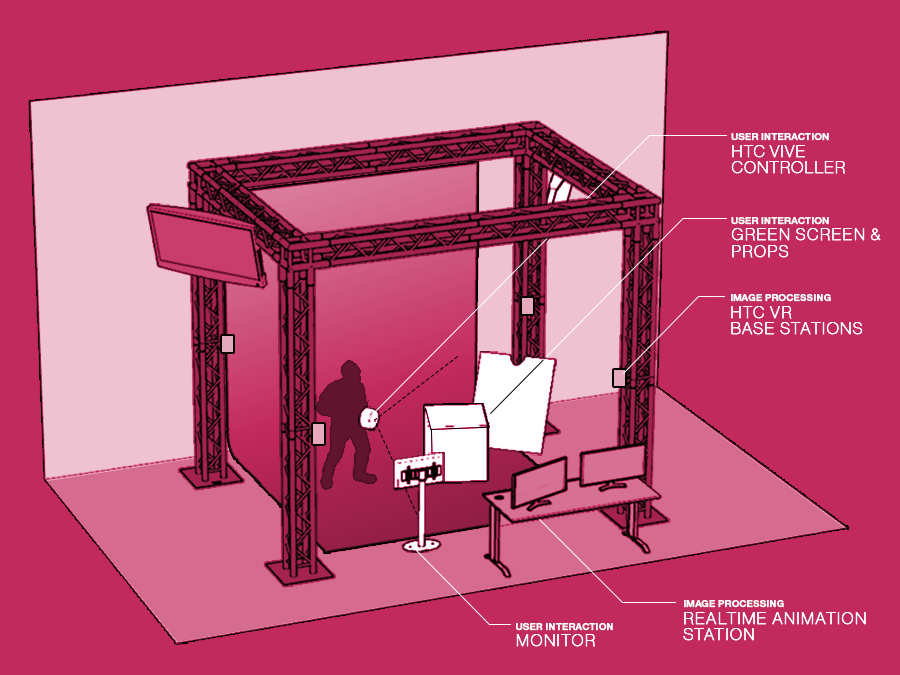
Impact Creative secured a contract to promote Seagate Technology at CES 2018, one of the largest consumer electronic trade shows in the world. They were commissioned to create a series of exhibits to demonstrate Seagate’s data processing capabilities. For this portion of the event, specifically, they wished to tell a story that emphasized the speed by which Seagate Technology can record, edit, and upload data. Impact had secured a 14’ green screen, one of the latest BlackMagic Live Production Cameras, an HTC Vive rigged to a Unity Graphics Engine, and Seagate’s multi-unit read/write usb storage units, to deliver this story.
When I was brought onto the project, they were nearly 2 weeks away from shipping to Las Vegas for the event, and the concept and design for this installation had yet to be fleshed out.
Initially through teleconference, Impact shared that the makeup of attendees and the typical progression for the event involved groups of 5-7 primarily middle-aged professionals with varying levels of technical aptitude; in business casual attire, they were to be led by Seagate sales staff from exhibit to exhibit in roughly 10 minute intervals. Impact staff would be located at each exhibit for technical assistance, and as part of the experience, Seagate wanted each visitor to leave with a high capacity USB drive.
Distilling this information, we needed to create a recorded acting experience that could be done quickly and repeatedly by one or more persons that was engaging to onlookers, but not too complicated or embarrassing for participants, resulting in a memorable, physical takeaway.
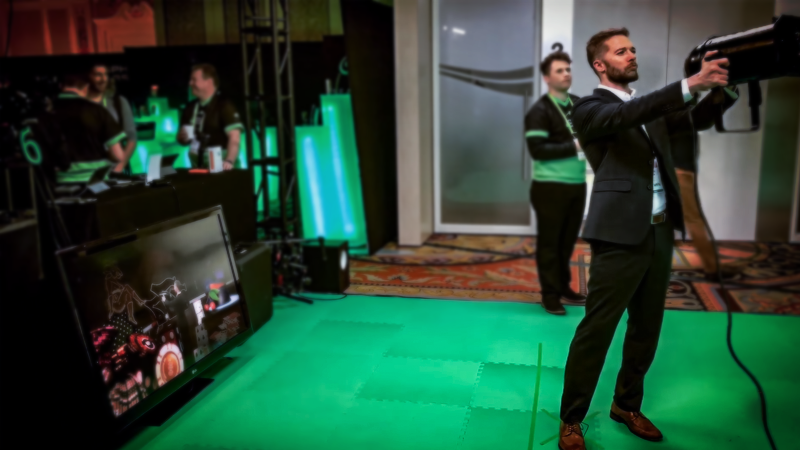
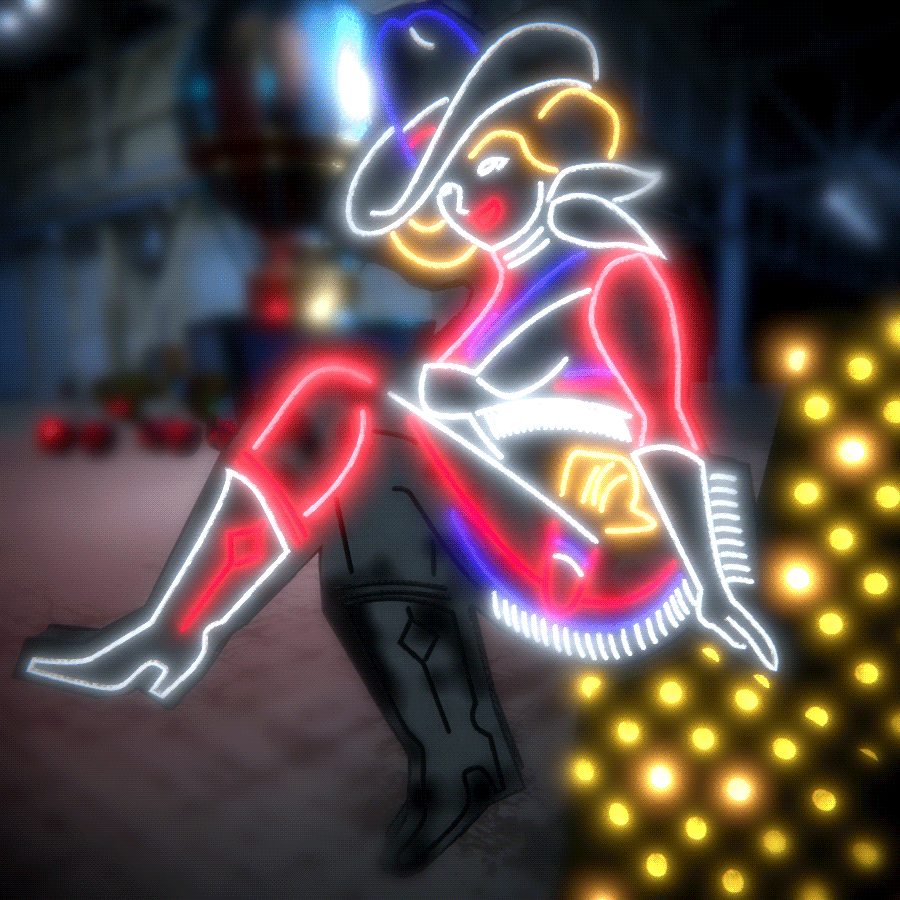
Unity is a versatile software package used in game design, film, architecture, virtual reality and vfx. Recently, its real time in-game rendering engine has begun to rival post-production quality realism, limited only by the performance power of the system running it. For the purpose of the event, it was necessary to show how even the most taxing of image processing tasks could be recorded quickly with Seagate Technology. The more reflections, particle effects, light sources, and collision dependencies, the better.
We pitched concepts as a group that tried to find a middle ground between the banal theme-park style photo shoot and the physically, dexterously, demanding activity of an action flick. Through body storming, we recognized that the green screen space would not accommodate more than two to three participants at a time to fit within the viewing angle of the camera. Moreover, the space was too small to allow for any camera movement at all; a setback, as we initially envisioned shooting and compiling the experience from multiple camera angles. For safety reasons, we also backed away from any platforms, jumps, crouching, or running.
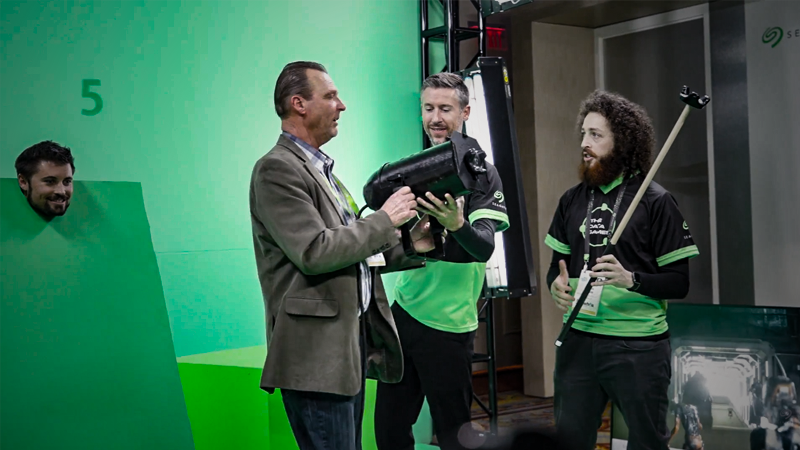
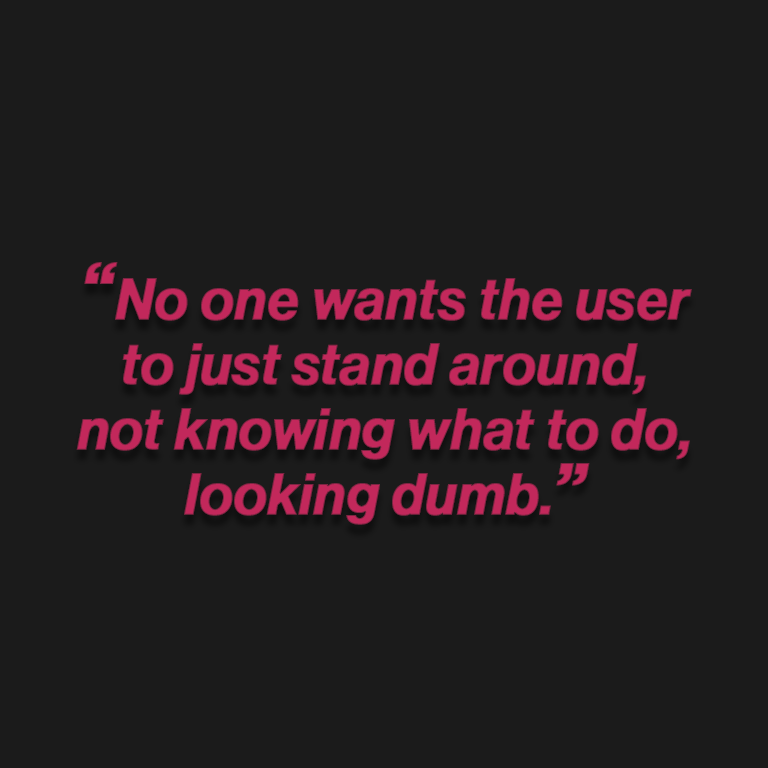
Our users were not actors, and we couldn’t rely on them to create An Experience, let alone a memorable one by observing themselves against a backdrop in a monitor. We decided to have the onsite Impact staff play as directors of the set, and to encode markers onto the physical and virtual stage to guide the flow of the experience. We conducted user testing with the Impact staff not involved with the project, to refine the director’s script and placement of the markers until timing was tight.
Keeping with the setting of being in Vegas, I built a virtual environment imagined as a prop room that housed elaborate set pieces you’d expect to find at a Rockettes show, replete with iconic references from the Strip. We equipped the user with a hollowed out theater light, fitted with an HTC Vive controller to sync with four stationed Vive receivers attached to struts around the green screen. At the director’s cue, the user would point the prop to physical markers, and on screen, it appeared that the user was digitally lighting the room, causing the props to animate in.
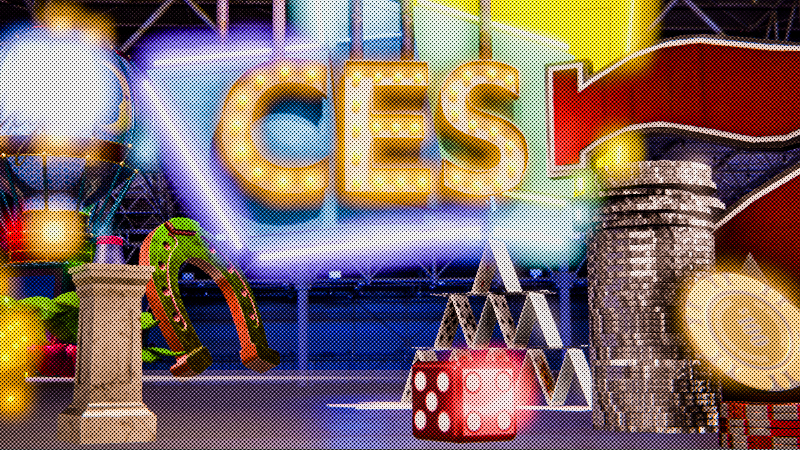
Using a combination of Rhino, Substance Painter, Unity, and C#, I modeled, texture mapped, animated, and created interactive triggers for all of the digital assets. Impact’s in-house technologist then linked these to the HTC Vive controllers and video monitors for encoding into the Seagate drives.
To enhance the illusion, certain props, like a large six sided die (wooden box), and a deck of cards (piece of cardboard) were physical items painted Key Green that occluded the user as s/he walked around them on stage. As an increasing number of props fill the screen, the user becomes engulfed in lights and animation, culminating with a large CES sign falling from the ceiling and a rain of confetti. Combined with sound effects, the video is recorded onto a thumb drive and handed to the user as they’re directed off stage.
Learning by doing: Prior to this project, I had, admittedly, only a modest ability with Unity, C# scripting, and texture mapping. However, the process was more “rise to the occasion,” than “fake it ‘til you make it,” and with YouTube tutorials on one screen, and my software on the other, I managed the time-sensitive trial by fire to learn and to execute well what the project demanded. I was successful, and it garnered me two more contracts with Impact, and became the basis of my workflow for other photorealism projects.